Post title...
Posted
|
Views: 1,274
Shampoo and Conditioner
To have beautiful hair, start at the beginning. Although there are lots of “hair care” products we do not think are healthy for hair, there are a few healthy products out there. They make hair thicker, glossier, give it body, and keep it from tangling.
The first type of hair product most know about is shampoo. The second type is conditioner. Shampoo is meant to clean hair of dirt and scalp oil while conditioner is meant to create shine, protect hair from drying out and make it easier to comb. There are so many different kinds of hair, and so many different types of shampoo and conditioner for that hair. The first step is to determine what kind of hair you have, to find out what kind of shampoo and conditioner is needed (Derrick).
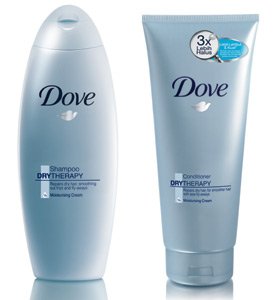
For girls with curly hair, try Dove shampoo because it is a moisturizer, and curly hair tends to be dry.
For girls with straight hair, try Suave shampoo and conditioner but always pay close attention to the description on the hair product used. Noting whether it is for thick, course, thin, dry, long, short, or moist hair and then choose according to hair type.

Post title...
Posted
|
Views: 800
Cool-tura
Ciencia y Tecnología para jóvenes
Ciencia y Tecnología para jóvenes

Olympus
Posted
|
Views: 665
Automatic Gladiator features a large number of game lines - here the number of reels of 25 standard - 5 bets can be made in the range from one cent to five dollars. To see the payout table, press the "Info". If you do not want to always use the "Spin" to start the reels, use the "Auto" and the reels will spin automatically. In this vryamya play a no less interesting machine Jacks or Better. You can also use the "Stop" button to stop the reels then whenever you want and not wait until they stop http://olympslots.com
.
In the game you will meet different characters: the characters from the movie Gladiator (the emperor Marcus Aurelius, General Maximus, Lucilla, Senator Krakh) Helm Gladiator, the Colosseum and the classic card characters (from Nine to Ace). The most profitable is the symbol of the emperor. The highest combination with his image will bring you 5000 coins. Wild symbol is the helmet of a gladiator. It can only occur on the 2nd, 3rd and 4th reels and thus replace any other symbol except Scatter. If the image of the helmet fall simultaneously on the three reels, you start the bonus game "Gladiator", which you will need to choose helmets. The scatter symbol in this slot machine - Colosseum. If you are on any of the lines will drop from three to five characters Colosseum, you will be able to play a bonus game of the same name, in which you have to open the stone slabs.
There is in this video slot and risk doubling game. This game is very simple and there you can zoom in on any payout. You will simply need to guess the color of the suit of the closed card.
If your answer is correct, your winnings will be doubled, and if wrong, the prize is canceled. You can guess up to five times in a row.
cacca
Posted
|
Views: 419
Add some text, Yo! Click this text box to change the text, style, color and fonts.
NO NO NO

Post title...
Posted
|
Views: 311
Test!
France Front Page
Posted
|
Views: 362
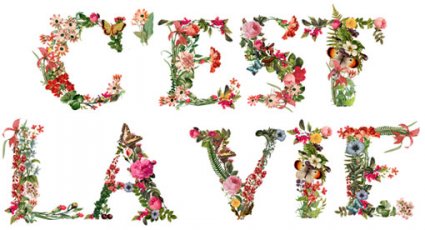
2014 NBA Preview: The Brooklyn Nets
Posted
|
Views: 1,061
#17 Brooklyn Nets

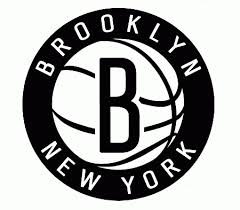
The Brooklyn Nets enter the 2014-15 season with a lot less promise than they did entering last season. Lot’s of people thought the Nets could compete with the Miami Heat in the Eastern Conference after the acquisition of Kevin Garnett and Paul Pierce, but boy were those people wrong. The Nets were a mess last season despite making the playoffs, and now with another new head coach and one more year of aging on their star players, the Nets will once again have to fight to make the playoffs.
Lionell Hollins is on board as the coach now that Jason Kidd left for the Bucks job. He will try and implement his flex/motion offensive system on a roster filled with aging stars. Let’s start first with Deron Williams. Williams at one time was the best point guard in the NBA in the eyes of some experts, but after a disappointing last couple of seasons he may not be in the top ten anymore. Last year he averaged 15 points and six assists, which are both down from his career averages. He battled through ankle injuries, and failed to facilitate at the pace we were so used to seeing Williams perform. He will need to find the Deron Williams of old if this team has any chance of making a deep playoff run.

The best thing that happened to this team this offseason is the return of Brook Lopez from injury. He missed all of last season and the Nets desperately missed his inside presence. He’s one of the better big men this league has with career averages of 18 points and seven rebounds. I think he will fit in nicely with Hollins as the new head coach because of his previous coaching experiences with players like Marc Gasol. Gasol thrived in Hollins offense so we can expect similar things out of Lopez this season.
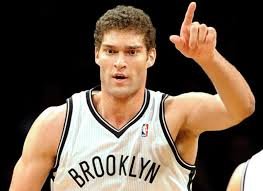
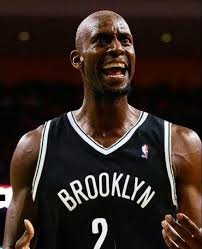

I get sad every time I watch Kevin Garnett play. I miss the days when he was the league MVP and racked up double-doubles like they were something on the value meal at McDonalds. Now that KG is 38, his age is showing in a big way. Last season he averaged seven points and six rebounds which were both career lows. He will serve as a valuable leader on this year’s team, but I wouldn’t expect too much more from THE BIG TICKET.
Joe Johnson was the Nets leading scorer last season despite his inconsistent play to start the year. He averaged 21 points per clip and made humongous shots for the Nets throughout the year. Anytime a big shot is needed in Brooklyn, Johnson’s the guy they go to. His scoring average may decrease this season with the return of Lopez, but I still expect him to take the last possession shots for the Nets. Andrei Kirilenko will also return this year and I expect him to start at the small-forward spot. Last season he under achieved averaging only 2.5 points and 2.3 rebounds per game. The former all-star will still contribute on the defensive end of the floor for the nets due to his lanky frame and experience.
The bench play for the Nets will be an interesting thing to keep an eye on this season. Mason Plumlee is returning from a fabulous summer where he surprised everyone by making the Team USA roster for the FIBA World Cup in Spain. He will need to be an energy player this season for Brooklyn and build off of his positive play from the summer. The Nets also traded for Jarrett Jack in the offseason, which will bring automatic scoring from the bench. He didn’t mesh well in Cleveland last year, but I expect him to improve on a more veteran-savvy team. The Nets will rely on shooters Bojan Bogdonovic and Mirza Teletevic to knock down the three-ball consistently off the bench. Brooklyn also drafted Markel Brown out of Oklahoma State after his promising senior campaign. He was an iron man for the Cowoys last season, at one point averaging over 40 minutes per game over a five game stretch.
I have the Nets finishing as the seventh seed in a lowly but improved Eastern Conference. They will have their nights, but ultimately their lack of youth will cost them in the end.
Potential Starters
PG: Deron Williams
SG: Joe Johnson
SF: Andrei Kirilenko
PF: Kevin Garnett
C: Brook Lopez
Check back tomorrow to see who I ranked 16th in the "HOOPSAHOLIC NBA Preview"
Post title...
Posted
|
Views: 490
great you tube videos
Post title...
Posted
|
Views: 494
beautiful sunset !
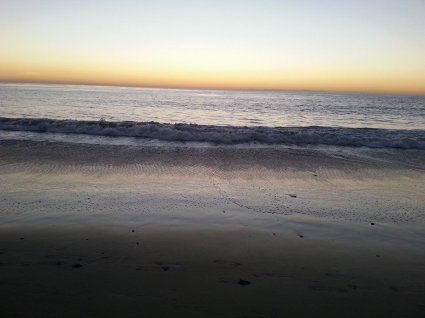
Osha 40 hour hazwoper certification
Posted
|
Views: 671
Osha 40 hour hazwoper certification
OSHA has stated in many interpretation letters that 40 hour and 24 hour sessions require site-specific hands-on learning on the actual PPE that an employee will be using in their job. Site-specific means just that. The training cannot be done with generic PPE, but must be done with the actual equipment in order to fully meet the OSHA regulations.
OSHA has stated in many interpretation letters that 40 hour and 24 hour sessions require site-specific hands-on learning on the actual PPE that an employee will be using in their job. Site-specific means just that. The training cannot be done with generic PPE, but must be done with the actual equipment in order to fully meet the OSHA regulations.

Professional pest control supplies
Posted
|
Views: 561
Professional pest control supplies
If you have ants, bed bugs, pesky birds, crickets, earwigs, fleas, flies, fungus and mold, gophers, mosquitoes, pantry pests, rats, mice, rodents, roaches, scorpions, silverfish, spiders, stinging insects, termites, ticks, or any other pest you want to get rid of, we have the pest control product that is just right for you.
If you have ants, bed bugs, pesky birds, crickets, earwigs, fleas, flies, fungus and mold, gophers, mosquitoes, pantry pests, rats, mice, rodents, roaches, scorpions, silverfish, spiders, stinging insects, termites, ticks, or any other pest you want to get rid of, we have the pest control product that is just right for you.

Cover reismagazine
Posted
|
Views: 420

Travel & Go
Reis naar jou paradijs
MALEISIË
Opzoek naar de perfecte rondreis voor u en uw gezin
BARCELONA
Opzoek naar de perfecte rondreis voor u en uw gezin
BARCELONA
van geschiedenis tot modern
YORK
Ontdek één van de mooiste historische steden van Engeland!
Add some text, Yo! Click this text box to change the text, style, color and fonts.
Add some text, Yo! Click this text box to change the text, style, color and fonts.
Van geschiedenis tot modern
BARCELONA
TRAVEL & GO
YORK
MALEISÏE
KIRCHBERG
Boek dé perfecte reis
Van geschiedenis tot modern
En nog veel meer. Enthousiast?
Kijk dan snel verder in onze reisgids
How to Hack Your Own E-Cigarettes
Posted
|
Views: 503
How to Hack Your Own E-Cigarettes
Tristan Ambat, a “vapologist” at the Henley Vaporium in New York City, describes how to customize a rebuildable atomizer
Check out this video to learn more: How to Hack Your Own E-Cigarettes |Vape Stores Directory.
Kingswood Station Condominiums Foundation Stabilization Project - East Brunswick, New Jersey
Posted
|
Views: 841
Kingswood Station Condominiums Foundation Stabilization Project - East Brunswick, New Jersey
The Kingswood Underpinning & Stabilization Project is a large Residential Condominiums, Townhouse Community in East Brunswick, Middlesex County, New Jersey, located in the north central part of the state. It was originally a previously abandoned farm & vacant land project.
The Kingswood Underpinning & Stabilization Project is a large Residential Condominiums, Townhouse Community in East Brunswick, Middlesex County, New Jersey, located in the north central part of the state. It was originally a previously abandoned farm & vacant land project.

Post title...
Posted
|
Views: 398
Add some text, Yo! Click this text box to change the text, style, color and fonts.
Post title...
Posted
|
Views: 391
Motion Simulator
Ok, this may be a bit over the top this time, but we really couldn't help ourselves . It's not like we're training aerial combat maneuvers like the Air Force, or mission flight training like NASA, or even product development like our automotive friends.
Ok, this may be a bit over the top this time, but we really couldn't help ourselves . It's not like we're training aerial combat maneuvers like the Air Force, or mission flight training like NASA, or even product development like our automotive friends.
Add some text, Yo! Click this text box to change the text, style, color and fonts.

Site Supervision - Nova Consulting Services
Posted
|
Views: 628
Site Supervision - Nova Consulting Services
Nova Consulting Services, LLC offers years of successful on-site supervision and field operations experience. Having been involved in some of the most notable projects across the country such as the 9/11 Recovery project, The Venetian Hotel & Casino, and the AOL Time Warner Building, Nova's professionals bring an extensive field of knowledge to any project.
Nova Consulting Services, LLC offers years of successful on-site supervision and field operations experience. Having been involved in some of the most notable projects across the country such as the 9/11 Recovery project, The Venetian Hotel & Casino, and the AOL Time Warner Building, Nova's professionals bring an extensive field of knowledge to any project.

recyclingbin
Posted
|
Views: 401
Recyclingbin.com is the industry leader in Factory Direct recycling bins. We are committed to providing recycling container solutions that will enhance your facility indoors or out, which are environmentally sensitive, intelligently designed, and sustainably manufactured.
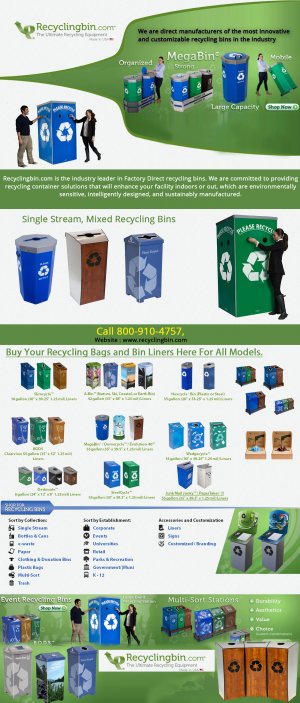
clockshoppes
Posted
|
Views: 289

Expressions of Time is a family owned retailer of quality clocks, home accessories, wine cabinets, home bar furnishings and curio display cabinets. Our products will enhance your home décor, make the perfect gift or a beautiful addition to a timepiece collection. We work with manufacturers and suppliers to obtain high quality, decorative clocks and home decor accents at a wide range of prices. We are dedicated to providing the best value for our consumers.
mobiolaboratories
Posted
|
Views: 572
MO BIO is the World Leader in Soil DNA & RNA Isolation. One of the fastest growing companies in Life Science, the product innovation, company philosophy, and customer service focus continues to draw customers and outstanding industry talent to MO BIO. The founders and employees of MO BIO are dedicated to the preservation of the environment and to bettering the quality of the Earth through science.
